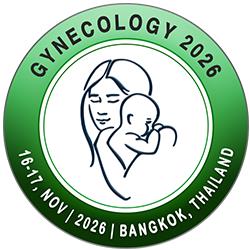Track: Spontaneous Abortion and Miscarriage

Understanding the Causes and Risk Factors
Pathophysiology: Mechanisms like chromosomal abnormalities, infections, autoimmune, and hormonal imbalances.
High-Risk Populations: Factors include advanced maternal age, recurrent loss, environmental exposures, and genetic predispositions.
Maternal Health Impact: Chronic conditions (e.g., diabetes, hypertension) and uterine abnormalities like PCOS as contributing factors.
Advancements in Diagnostics and Prevention
Early Detection: High-resolution ultrasound, Doppler studies, and biomarkers for monitoring miscarriages.
Prevention: Progesterone, anticoagulants for clotting disorders, and lifestyle interventions.
Genetic Innovations: Non-invasive testing, preimplantation genetic screening, and ethical genetic counseling.
Psychosocial and Emotional Support
Psychological Care: Addressing grief, anxiety, and depression with compassionate counseling.
Family and Community: Encouraging partner support and leveraging peer programs to heal emotionally.
Awareness: Public education on causes, prevention, and reducing stigma associated with pregnancy loss.
Global and Public Health Perspectives
Care Disparities: Ensuring equitable access to quality reproductive healthcare worldwide.
Research Advances: Clinical trials and big data applications to address spontaneous abortion trends.
Future Directions: Personalized care pathways, innovations in reproductive health, and global collaboration networks.
Together, let’s bring hope and solutions to those impacted by pregnancy loss. Submit your abstract today and share your ideas, research, and strategies for improving care and outcomes in the field of spontaneous abortion and miscarriage.
Scientific Highlights
- Gynecology and Obstetrics
- Paediatric and Adolescent Gynecology
- Menstrual cycle and Ovulation
- Reproductive Endocrinology and Infertility
- Contraception and Family Planning
- Gynecologic Oncology
- Gynecology Pathology and Aesthetics Gynecology
- Urogynecology and Pelvic Floor Disorders
- Midwifery and Obstetrical Nursing
- Maternal Fetal Medicine Innovations
- Advancements in Prenatal Diagnostics
- Preterm Birth and Prevention
- Spontaneous Abortion and Miscarriage
- Sexually Transmitted Diseases
- Minimally Invasive Gynecologic Surgery
- Gynecological Disorders
- Menopause and Hormone Replacement Therapy
- Global Women’s Health Initiatives
- Ethical and Legal Issues in Obstetrics and Gynecology
- Innovations and Future Directions in Gynecology and Obstetrics


